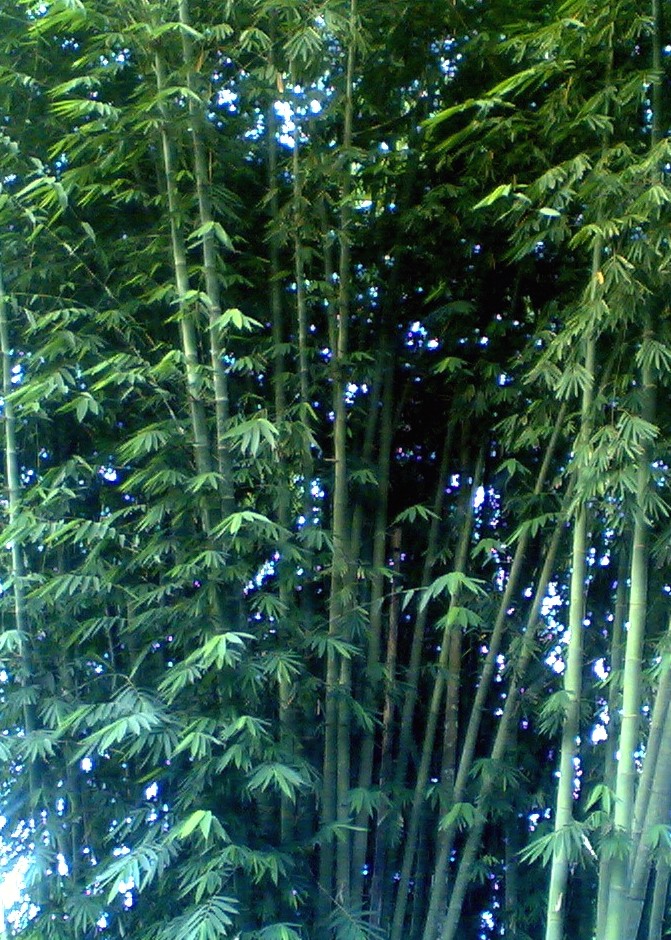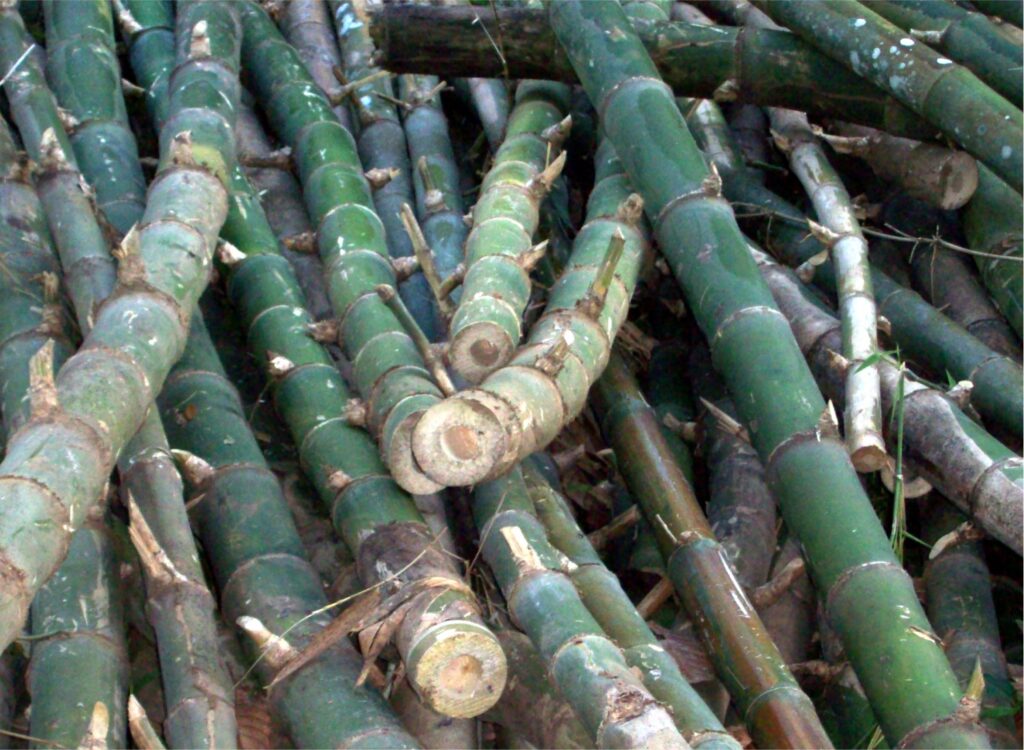Text and Photos by Henrylito D. Tacio
If the Philippines intends to reduce the trade deficit, which now stands at $58.3-billion (roughly P3.2-trillion), the government should seriously consider the launching of a national bamboo industry development program targeting 2 million hectares over the next five years, a former agriculture secretary suggests.
“The worldwide demand for bamboo products, especially engineered bamboo for construction, is growing by leaps and bounds,” said Emmanuel Piñol, the first agriculture secretary of the Duterte administration.
Piñol forecasts that by 2031, the market size of bamboo products “is expected to reach US$99.8-billion.”
“While there is an on-going movement to promote the planting of bamboo, especially the huge giant bamboo, this is largely undertaken by private advocacy groups,” he said.
Right now, the Philippines has an estimated bamboo area of around 104,000 hectares. It generates a value of $60 million yearly.
Aside from the passage of a measure creating the Philippine Bamboo Industry Development Council (PBIDC) and allocating P1-B for the program, “government’s efforts had merely been on meetings, seminars and a few ceremonial plantings,” Piñol observed.
According to Piñol, what the country needs now is “a national action to plant bamboo, especially in the denuded highlands of the country to serve two purposes – start an industry which could generate jobs and revenues and contribute to the prevention of soil erosion.”
In Bukidnon, a private corporation is establishing a modern bamboo processing facility which could serve as a model for all bamboo-growing provinces in the country.
Bob Tinsay, chairman of the Malaybalay-based Bukidnon Giant Bamboo Resources Corporation, estimates an income of P1-million from bamboo poles alone per hectare. This means that “if two million hectares are planted (to bamboo) all over the country, the poles alone could generate a gross earning of P2-trillion.”
Piñol said that if the poles are processed into engineered bamboo and other materials, the added value is estimated to be double the raw materials, thus the potential of building a P4-trillion industry that is sustainable and offers environmental benefits.
“What needs to be done now is for the government to establish a National Bamboo Agency which would coordinate with all other instrumentalities of government, including the private sector, to start planting the giant bamboo in all public lands including the vast ancestral domain areas,” Piñol said.
The former agriculture secretary believed that within 5-8 years and with two million hectares planted to bamboo, the country will be exporting huge volumes of bamboo products, “which could reduce our trade deficit, generate P4-trillion annual revenues, create jobs and most of all help prevent flooding and protect the environment.”
Industry players said the bamboo industry holds huge economic potential for contributing to industrialization, being a highly-durable and ecologically-friendly raw material. Comparable to or even better than other hardwood, bamboo has already been technologically developed into engineered wood, composites, laminated wood, or strand woven bamboo as sophisticated lumber or construction material.
Filipinos have extensively exhibited their creative genius in using bamboo.
The Cubo modular house, designed by Earl Forlales, is not only modern but one that is also an aesthetic and durable house made of natural, indigenous materials. In 2017, designer Christopher Paris Lacson crafted the Banatti motorcycle, whose body is made of highly durable, elegant-looking, lightweight bamboo.
Lacson himself said the Philippines has long been a pioneer of industrial bamboo design, as cited by a local newspaper in the early 1950s. Filipino Antonio de Leon designed a single-engine, light experimental aircraft XL-14-MAYA. It used a type of woven bamboo called WOBEX (woven bamboo experimental).
Another product is the bamboo mobile, a type of jeepney spearheaded by the Department of Transportation of long ago. Its body is made of bamboo. Bambu Batu (House of Bamboo) cites many other modern, fashionable furniture and clothing products made of bamboo.
Bamboo, a sustainable material, can be used in the fight against climate change. For one, its fast-growing trait enables it to sequester carbon more substantially than other plants. Bamboo, the International Network for Bamboo and Rattan (INBAR), reports, releases 35% more oxygen than other trees. In addition, bamboo plants sequester 12 metric tons of carbon per hectare annually.
Durable products made from bamboo can also be potentially carbon-negative. Some studies showed bamboo could be a favorable substitute for hardwoods, even FSC (Forest Stewardship Council)-certified ones.
Bamboo also replaces fossil fuels and reduces deforestation. Its solid biomass is used for cooking (charcoal and briquettes). It can also be converted into pellets for electricity and heating.
More interestingly, bamboos have been found to thrive in abandoned mines in the Philippines. The reason: they are useful as a bioremediation tool, absorbing toxic metals, and fully restoring mined-out barren lands.
Executive Order No. 879 mandates the Department of Environment and Natural Resources (DENR), Mines and Geosciences Bureau (MGB), and Laguna Lake Development Authority (LLDA) to use bamboo at least 20% in their annual reforestation areas.
Industry players, meanwhile, contend the Philippine Bamboo Industry Development Act (PBIDA) – which was approved for the third and final reading in 2021 – will establish the country’s competitive edge in the natural bamboo market in transport, construction, furniture, and fabric sectors that can lead to industrial-manufacturing development.


PBIDA envisions to seize part of a global market placed in 2010 at $8 billion and help institutionalize the PBIDC, which was created by Executive Order 879.
Just recently, the Department of Trade and Industry and PBIDC signed a memorandum of agreement for bamboo’s propagation in 1,500 towns nationwide in order to position bamboo as an industrial crop.
The government is funding Forest Carbon Project Plans of investors. The Philippines is a signatory to several global treaties on climate change, including the United Nations Convention on Climate Change (1992), Kyoto Protocol (1997), and Paris Agreement (2015).
The bamboo program is also in line with the Ferdinand Marcos, Jr.’s administration. The president himself made a declaration during the United Nations General Assembly that fighting climate change will be among the priorities of his administration.
Marcos also made a call on his birthday on September 13 last year during the Nationwide Bamboo and Tree Planting Program, urging everyone “for us to uphold environmental protection.”

